Our friends at Caffe Amouri in Vienna roast the best coffee in the area. That’s why we use it for our customers. But we understand sometimes you want to stay home in your jammies drinking coffee. So, we thought we’d give you a tutorial on how to brew coffee.
First, get rid of that single shot coffee machine. You know which one. Good coffee is easy to make. You just need to know the coffee making fundamentals, which the National Coffee Association published and we now sharing with you. Get ready to be the person every wants brewing the coffee.
How to Make Coffee: the fundamentals
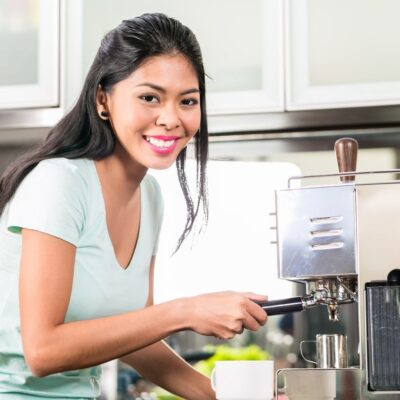 Like any skill, once you master the fundamentals, you can experiment to find the process you like best: French press, drip, pour over. They’re all good!
Like any skill, once you master the fundamentals, you can experiment to find the process you like best: French press, drip, pour over. They’re all good!
Here are the fundamentals for brewing a classic, no frills, cup of coffee.
Equipment Maintenance
Did you know you need to clean your make thoroughly after each use? From the grinder to the gold filter to the pot. Ha! Let’s be real—most people don’t do it. We don’t always do it at home.
Why should we change our ways? Because any ground left behind and any buildup of coffee oil (caffeol) can make your next cup of coffee taste bitter and rancid. Sure, it may take some serious buildup before you notice. By why risk it?
Cleaning your coffee make isn’t complicated. Just rinse (or wipe) with hot water and dry. That sounds easy. Maybe we will start doing it at home. Especially since we do it at the shop so we know how.
Respect the Bean
Whatever brewing method you choose, you simply can’t have a great cup of coffee without great beans (hence the reason we love Caffe Amouri so much).
The coffee’s quality and flavor start with the type of bean and roast you select. There can be a world of difference between roasts, so check out the NCA’s roasting types guide.
The factors impacting taste include:
- The country and region of origin
- The variety of bean —arabica, peabody, or a blend
- The roast type
- The texture of your grind
Guess what? There is no right or wrong answer to what roast you love. If you love, love, love espresso roast coffee, you are allowed to grind it for a drip system. We won’t tell anyone.
Choose fresh beans
Why not buy coffee beans from a can at the supermarket? Many reasons, but mostly because they aren’t fresh.
It’s important to purchase coffee as soon as possible after it’s roasted because despite what some big companies will tell you, coffee will go bad (bitter and rancid). Fresh-roasted coffee is essential to your quality cup.
It’s also best to buy it in two-week supplies. That may mean one pound at a time, or ten. No judgement here. Just make sure it’s fresh.
Then keep the beans fresh. A little bean’s biggest threats are air, moisture, heat, and light. Store them in an opaque, air-tight containers at room temperature. Keep them in a dark and cool location. Take them to bed with you at night. Just kidding. Sort of.
And remember coffee beans are a single use item. After that any brew you get will be quite bitter.
Grinding your coffee beans
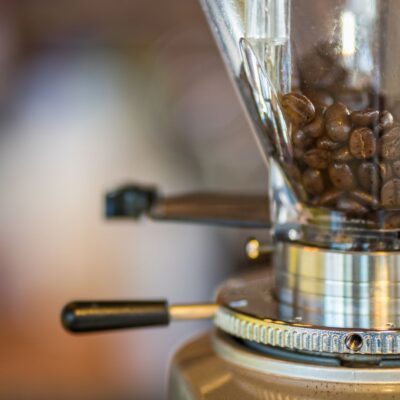 Yes, we think you should grind your own beans. The reason is that the closer you grind your beans to when you’re brewing the coffee, the better the coffee will taste. Beans stay fresher longer in their whole state.
Yes, we think you should grind your own beans. The reason is that the closer you grind your beans to when you’re brewing the coffee, the better the coffee will taste. Beans stay fresher longer in their whole state.
A burr or mill grinder are best because they’re able to grind the beans to consistent grinds. Blade grinders don’t provide that consistency. And with a burr grinder you can control the size of the grind. That makes a huge difference to taste.
That said, if a blade grinder is what you have then use it. Or buy a new grinder. It’s worth it. If you have beautiful, freshly roasted beans and the coffee tastes bitter, it may ground too fine. On the other hand, if it tastes kind of flat, your grind is too coarse.
This chart will help you figure out which grind to choose.
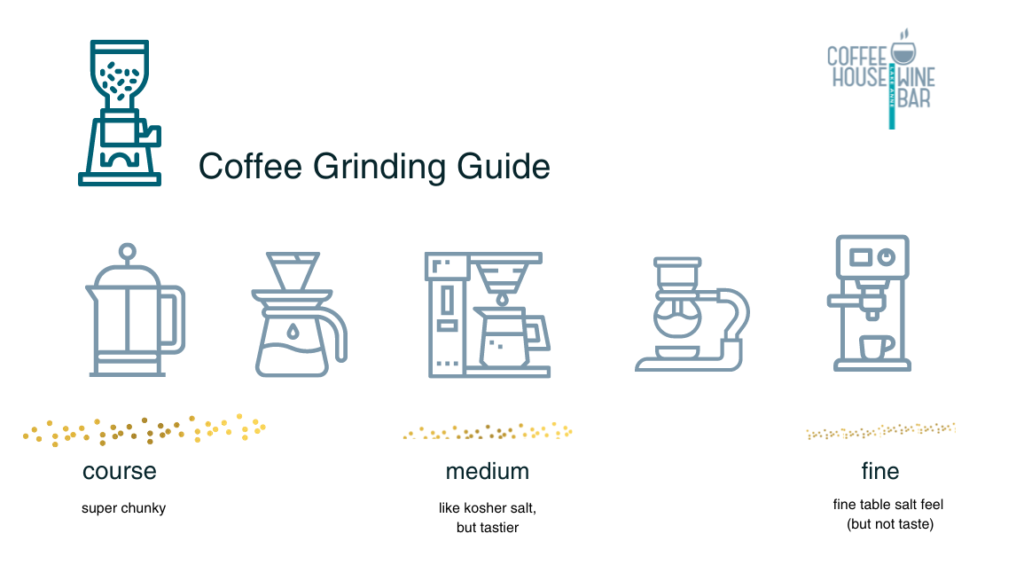
H2O
Water. You guessed it. The quality of the water impacts taste—especially if your tap water tends to taste like chlorine. It’s best to use filtered or bottled water.
If are going to use tap water, let the tap run a few seconds so that any residue in the pipes clears out.
And use cold water, not hot. Fresh cold water has a higher dissolved oxygen content, which makes it taste better.
The Coffee-to-Water Ratio
Memorize this: one to two tablespoons of ground coffee for every six ounces of water.
The coffee-to-water ratio comes down to your personal tastes, with one tablespoon being weaker than two (obviously). It may differ depending on the roast you’re using. Suffice it to say, though, that three tablespoons of ground beans to six ounces of water would put some hair on your chest.
Use a measuring cup to measure out the water until you are comfortable to where the water lines are on your brewer.
Water Temperature
Be safe out there. Nothing will ruin your morning like a second degree burn.
For your coffee, you want to maintain a water temperature between 195 to 205 degrees Fahrenheit for optimal extraction (fancy phrasing, right?). If the water is colder, you’ll get a flat, under-extracted coffee. Too hot and you’ll lose a lot of the taste.
Your brewer should automatically brew at the correct water temperature. If you are brewing the coffee manually, like with a pour over, let the water come to a full boil and then turn off the heat source. Let the water rest a minute (literally one minute) before pouring it over the grounds.
Drinking it hot or cold is another preference. Your job is to brew it at the correct temperature. If someone wants to chug it down super hot or cool it off, well… that’s up to them.
The Optimal Brewing Time
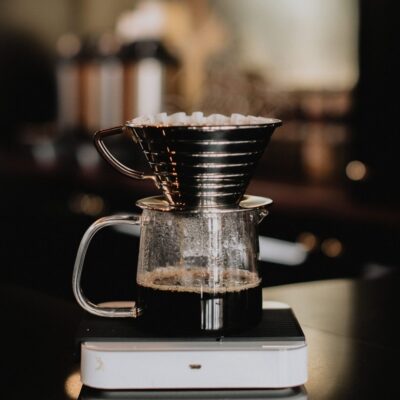 One minute, ten minutes? What is right? That depends on how you’re brewing your coffee.
One minute, ten minutes? What is right? That depends on how you’re brewing your coffee.
Brew time is all about how long the hot water is in contact with the beans. In a drip system, that should be about five minutes. In a French Press, the contact time should be 2-4 minutes. Espresso only needs 20 to 30 seconds.
If you’re not using a drip maker or espresso machine that has a timer built in, then make sure to time it yourself.
Those are the fundamentals of how to brew coffee. You know the right coffee-to-water ratio. You know how to store your coffee beans. Now you’re ready to start brewing. Here are the three most common methods people use to brew coffee at home.
The Pour Over
If you’re investing in really good beans, then invest in a way to make a pour over. It is arguably the best method for brewing an aromatic and complex cup of coffee. The Chemex and the Clever Dripper are both popular options.
Here is how you do it:
- Bring water to a boil (but don’t over boil).
- Refer to the grind chart for how to grind your beans.
- Put a filter in the brewer and rinse it with hot water. This will remove any papery residue on the filter and warm the brewer. Discard the water after rinsing. (Note: if you’re using natural filters, this is not as important as if you’re using bleached filters.)
- Add the grounds to the filter in your favorite coffee-to-water ratio, making sure the surface is level.
- After letting your water rest a minute, slowly pour only enough water over the grounds to saturate them completely. Start from the middle and work your way outward in a circular motion.
- Fill the bowl to the top, cover, and set your time for four minutes.
- Set the dripper over your coffee cup and let the beautiful nectar fill the cup.
The French Press
How sophisticated it feels to brew coffee like you’re in Europe. Ah, but how do you do it without getting grounds everywhere? This way:
- Bring water to a boil.
- Grind the beans to the French press consistency, which is similar to what you would use with your drip machine.
- Add the grounds to the French press.
- After letting your boiled water cool a minute, add it to the French press. Stir it vigorously. Place the top on the press.
- Brew for about 4 minutes, then slowly plunge the press. Don’t forget this step: it’s the way you keep the grounds separate from the coffee.
The Drip
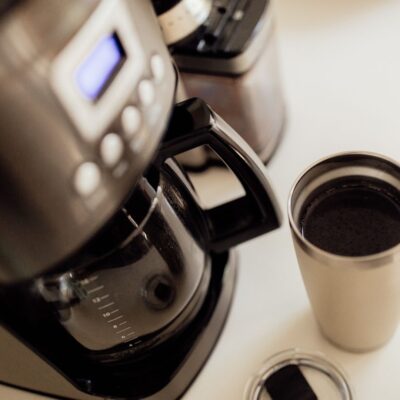 If you have multiple coffee drinkers in the house, or you like to drink a whole pot (not judging anyone here), nothing beats a drip. Our advice is to buy a high-quality drip machine, like the Capresso. The quality is vastly superior to super inexpensive box store machines.
If you have multiple coffee drinkers in the house, or you like to drink a whole pot (not judging anyone here), nothing beats a drip. Our advice is to buy a high-quality drip machine, like the Capresso. The quality is vastly superior to super inexpensive box store machines.
Now, how to do it.
- Grind the beans to a uniform consistently (somewhere between the pour over and the French Press)
- Measure out your grounds into the filter depending on how many cups you’re making.
- Fill the water reservoir and swivel the water spout over the center of the grounds (if the machine you’re using has that feature).
- Turn off the machine as soon as the coffee is done brewing (it will stop bubbling) to avoid burning it. If you can get a machine that has a thermos carafe, great. If not, transfer the coffee into a thermos to keep it fresh.
- Clean your filter basket and carafe after every use. Clean the machine once a month by filtering through a mixture of water and white vinegar. This will remove any built-up residue. You may want to filter through plain water after that just to make sure your next pot doesn’t taste like vinegar!
Of course, if ever you don’t want to make coffee yourself, our baristas would love to make it for you.
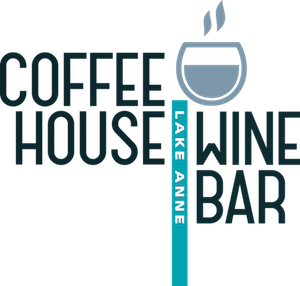



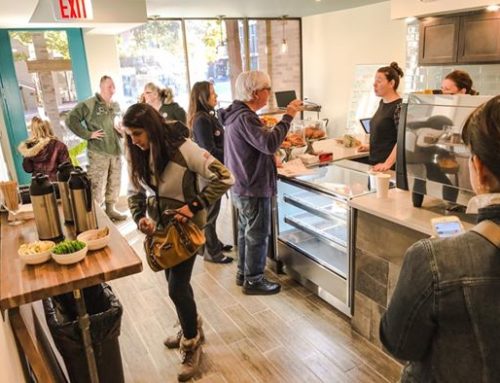
You’re spot on with your comments about the French Press, which make a pretty bold cup of coffee. I, on the other hand, love smooth coffee. You can keep all those bitter coffee beans. Not for me. If smooth is what you’re looking for, then I suggest trying cold-brew. It’s super smooth and super easy.
Cold brew is very tasty. Ours is quite popular!